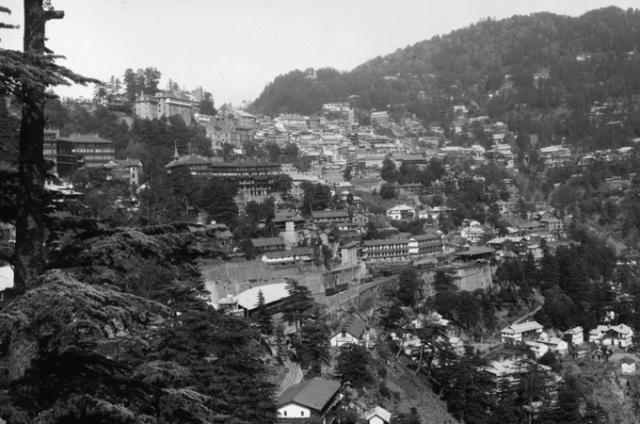Shimla: A moderate intensity earthquake that hit the northern regions on May 1 only exposed the lukewarm response towards disaster management here corroborating what a baseline survey on awareness and preventive practices had brought out only recently.
The 5.7 Magnitude tremor that shook up the mountains, early on the May Day afternoon, left most office goers, house owners, tenants, school children and anybody who was indoors, clueless about adopting any safety measure beyond those who had exit access, attempting to run out of the buildings. The disaster telephone help lines, set up primarily for such emergencies, were not working.
It came as no surprise to the surveyors of Himachal Pradesh Economic and Statistics department, who carried out the first of its kind survey in the hill state that 84 percent of the population was not aware of any disaster management plan prepared by anybody.
The disaster preparedness survey report was only released a few days before the moderate intensity earthquake on Wednesday.
Involving intensive fieldwork, the data collected in two phases on a survey sample size of 2359 involved people from rural and urban backgrounds, district administrations, medical professionals, engineers, architects and schools.
Speaking to Hill Post about the report findings Pradeep Chauhan, head of the department said, “with about 90 percent of state residents living in rural areas, much of the rural population believed that deforestation was the major reason for disasters occurring.”
“Interestingly, second in ranking was the belief of respondents that wrath of Gods and lack of faith in God contributed towards causing disasters,” he said.
A large number (83%) considered that buildings were not being constructed according to building codes and 91 % had not heard what a retrofit structure was.
A large section of the populace (72%), however were of the view that there was a strong relationship between disaster and development.
The survey carried out was done to asses data gaps in preparedness and awareness levels and to managing post and pre disasters situations found that 83 of the sampled population had never been trained to deal and manage a disaster situation.
About 80 percent of district administration officers were not even aware of existence of regional response centers located in Himachal for dealing with disasters.
Whereas only half of the district administrators surveyed were familiar with modalities for requisitioning assistance from armed forces but 67 % of medical professionals stated that they were neither adequately prepared nor equipped to face any sort of disaster.
Earthquake hazard profiling places five districts; Chamba, Hamirpur, Kangra, Kullu and Mandi in an area prone to severest intensity of earthquakes, while the remaining area is only at the next severity level.
Lying on the Alpine – Himalayan seismically active belt running from Alps mountains from Yugoslavia, Turkey, Iran, Afghanistan, Pakistan, India, Nepal, Bhutan and Burma, the state in 90 years has recorded about 250 of earthquakes of Magnitude 4.0 and more including 60 with magnitude of 5.0 or more.
In over hundred years the 4th April, 1905 Kangra earthquake of 7.8 Magnitude that claimed thousands of lives and devastated many ancient structures has been the most severe shakeup in recorded history of the hill state. The 6.8 Magnitude tremors of 1975 in Kinnaur-Spiti and the 6.4 Magnitude quakes of 1906 did leave a destruction trail too.
As Editor, Ravinder Makhaik leads the team of media professionals at Hill Post.
In a career spanning over two decades through all formats of journalism in Electronic, Print and Online Media, he brings with him enough experience to steer this platform. He lives in Shimla.





As a Hilly state there are more chances of disaster caused by earthquake, if some of the residents of Shimla are unaware about the survival in the situation of quake it is not good for them. People should know the basic steps which can prevent them form earthquake and any other type of casualty.
Given the fact that development of most areas of Shimla has gone way beyond the carrying capacity of the local ecosystems. In addition to our existing risks and vulnerabilities, our careless approach and ignorance has made Shimla one of the most disaster-prone cities in India. While leading scientists are making alarming statements about the possibilities of a major earthquake in the Himalayan region, we are constructing buildings without proper site selection, planning and without following the standard Building Codes and good practices. Himachal Pradesh State Disaster Management Authority (HPSDMA) is trying to spread awareness through various means. The need of the hour is to realize that each individual is responsible for his/her own safety and learning about disaster preparedness is the key to this. As a volunteer, I would request all readers to kindly spread the word about HPSDMA and its social media initiative titled as ‘Sajag Himachal’ to raise awareness about disaster preparedness.